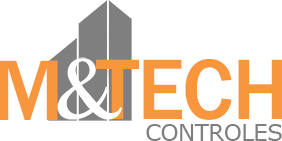Content

A company uses a cash over and short account to show a discrepancy between the company’s sales records and other reported figures and its audited accounts. For example, if the cash in the register is less than the amount on your sales receipts, then you have a cash shortage, reports Double Entry Bookkeeping. Cash over and short accounts are also used widely to balance the company’s accounting records when it replenishes its petty cash account. As this petty cash fund is established, the account titled “Petty Cash” is created; this is an asset on the balance sheet of many small businesses. In this case, the cash account, which includes checking accounts, is decreased, while the funds are moved to the petty cash account.
- Cash Over and Short account is also used for Petty Cash overages and shortages.
- Thus, this account serves primarily as a detective control—an accounting term for a type of internal control that aims to find problems, including any instances of fraud, within a company’s processes.
- Over and short—often called “cash over short”—is an accounting term that signals a discrepancy between a company’s reported figures (from its sales records or receipts) and its audited figures.
- A company, Red Co., maintains a cash register to record its sales.
One way to control cash is for an organization to require that all payments be made by check. However, there are situations in which it is not practical to use a check. For example, imagine that the Galaxy’s Best Yogurt runs out of milk one evening. It is not possible to operate without milk, and the normal shipment does not come from the supplier for another 48 hours. To maintain operations, it becomes necessary to go to the grocery store across the street and purchase three gallons of milk. A petty cash fund is a type of imprest account, which means that it contains a fixed amount of cash that is replaced as it is spent in order to maintain a set balance.
Cash Short and Over
A cash short and over account is used when there is no evidence of an impressed account, such as small cash. The account is usually left active until around the end of such a company’s fiscal period or year. It is then shut and listed on the income statement as a miscellaneous cost.

Internal tampering could cause a business to be over and short in its accounting. This tool works seamlessly with Secure Search to target shortages, enabling retailers to determine if a discrepancy is cashier fraud or a simple mistake. Secure Cash Over/Short consolidates transaction and over/short data across all registers and provides an easy-to-view detailed analysis to help identify trends and discrepancies worth investigating. Simply toggle your view of metrics between register or cashier and drill down for more details with a click. Julia is responsible for administering the petty cash fund for her employer, Deia’s Drafting Company.
What is the Cash Over and Short Account?
A company, Red Co., maintains a cash register to record its sales. This register includes all receipts from customers for over-the-counter sales. During closing the register, Red Co. counted its cash in the drawer, which amounted to $520. This term pertains primarily to cash-intensive businesses in the retail and banking sectors, as well as those that need to handle petty cash. If a cashier or bank teller errs by giving too much or too little change, for example, then the business will have a “cash short” or “cash over” position at the end of the day. Drillable dashboards and reports focus on the store level, maintaining a history of shortages and overages for the store’s cashiers and registers, presenting trends and abnormalities.
The receipt should set forth the amount and nature of expenditure. At any point in time, the receipts plus the remaining cash should equal the balance of the petty cash fund (i.e., the amount of cash originally placed in the fund). A firm will note cash variation instances easily in a single accessible account.
How to Account for Credit Card Sales
A cash short and over account is an account of income statements in which cash overages or shortages are reported. The account may be used by a company to document unexplained discrepancies arising from the replenishment of limited cash funds. The amount a company is over or short will impact its net income (revenues less expenses). As we have discussed, one of the hardest assets to control within any organization is cash.

A check for cash is prepared in an amount to bring the fund back up to the original level. The check is cashed and the proceeds are placed in the petty cash box. At the same time, receipts are removed from the petty cash box and formally recorded as expenses. In practice, the cash over and short account can only have a debit or credit balance. In other words, the cash in the register can be higher or lower than the actual cash for classification in this account. If a company has various cash drawer locations, the cash over and short account holds the net of these differences.
What Is Cash Over and Short?
Typically, petty cash accounts are reimbursed at a fixed time period. Many small businesses will do this monthly, which ensures that the expenses are recognized within the proper accounting period. In the event that all of the cash in the account is used before the end of the established time period, it can be replenished in the same way at any time more cash is needed.
- In practice, this journal entry will also incorporate other aspects of the underlying transactions.
- It is used in businesses that use cash in day-to-day operations, for example, retail stores and restaurants.
- Now cash is debited for $94, the sales account is credited for $95, and cash over and short is debited for $1.
- Before Julia can reimburse her co-workers for expenses, they must provide her with a receipt for their expenses.
- As stated above, any discrepancy during this process goes into the cash over and short account.
The cash over and short account is an account in the general ledger. The account stores the amount by which the actual ending cash balance differs from the beginning book balance of cash on hand, plus or minus any recorded cash transactions during the period. The journal entry for this action involves debits to appropriate expense accounts as represented by the receipts, and a credit to Cash for the amount of the replenishment.
Accounting for Petty Cash and Cash Short and Over
This account also provides companies with the ability to monitor the handling of cash, since it can apply to tellering operations too. The account cash short and over provides a way to monitor employees’ cash handling proficiency. When executed properly, lane accountability enhances efficiency, customer service and provides staff with additional time for more meaningful tasks.
- Occasional errors may cause the petty cash fund to be out of balance.
- Deferred taxes payable refers to the amount of income tax that a company has temporarily deferred and is obligated to pay in the future.
- The sum of the cash and receipts will differ from the correct Petty Cash balance.
- A larger balance in the account is more likely to trigger an investigation, while it may not be cost-effective to investigate a small balance.
- As a company grows, it may find a need to increase the base size of its petty cash fund.
- It requires determining the difference between the value of monetary transactions recorded in the system with actual cash.
Subtract the amount by which you need to replenish the account from the total amount of your vouchers. A negative result represents a cash short amount, while a positive number represents a cash over amount. Calculate the sum of the petty cash account’s vouchers you created during the accounting period to determine how much cash you distributed during the accounting period. In the example, if you have $300 in vouchers for office supplies and $140 for transportation expense, add $300 to $140 to get $440 in total vouchers created during the period. The cash over and short account is an expense account, and so is usually aggregated into the “other expenses” line item in the income statement. A larger balance in the account is more likely to trigger an investigation, while it may not be cost-effective to investigate a small balance.
